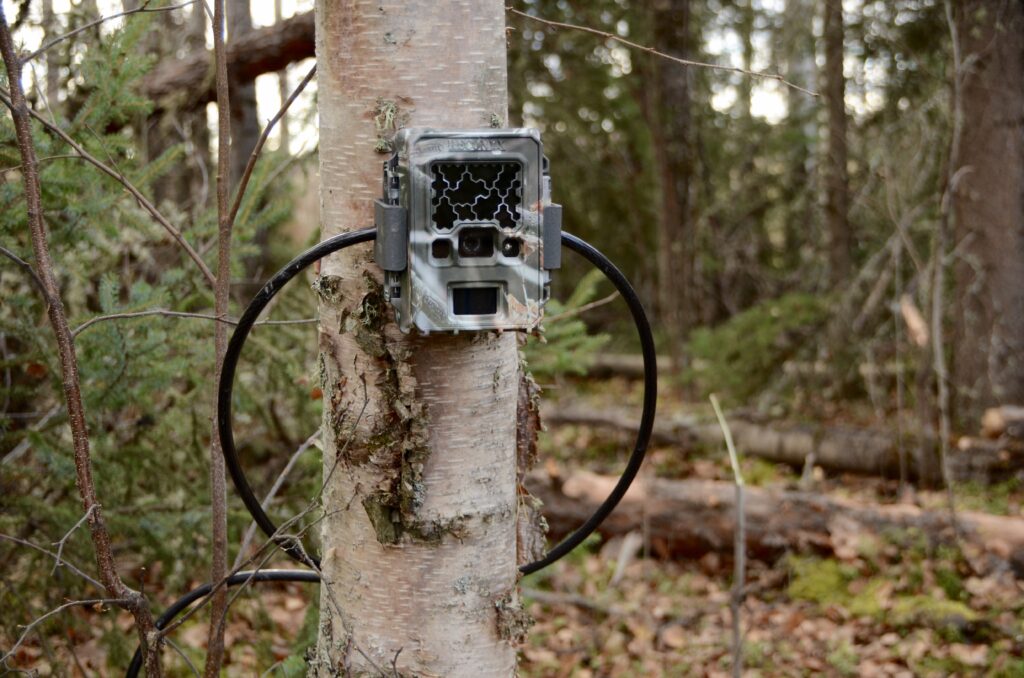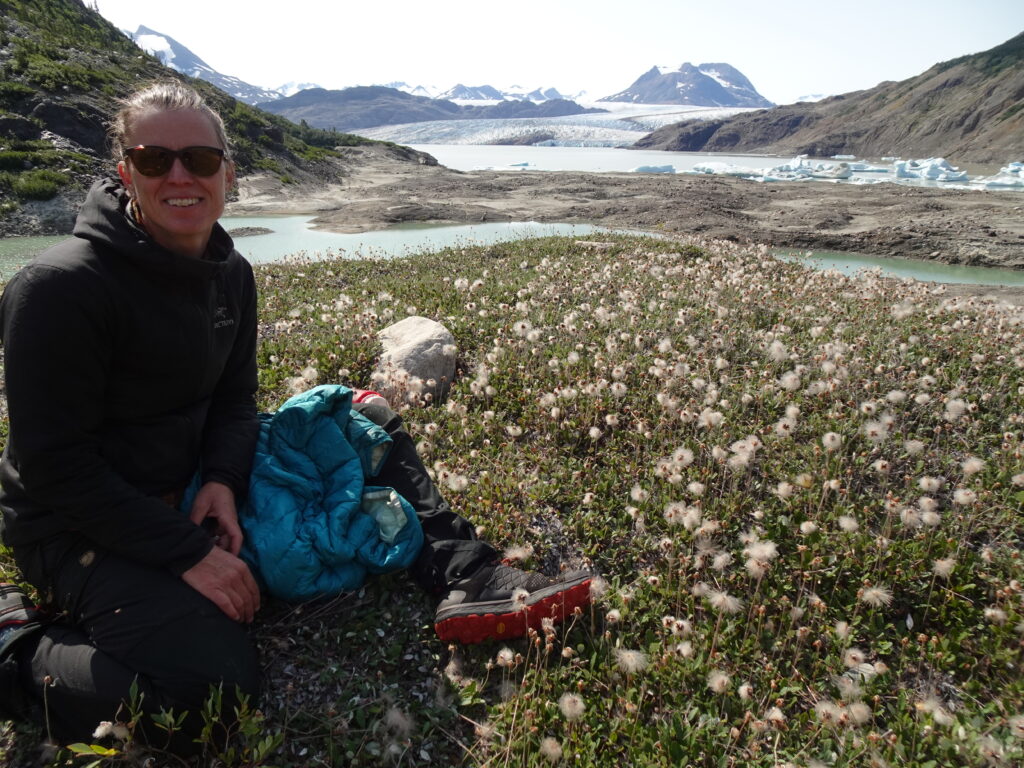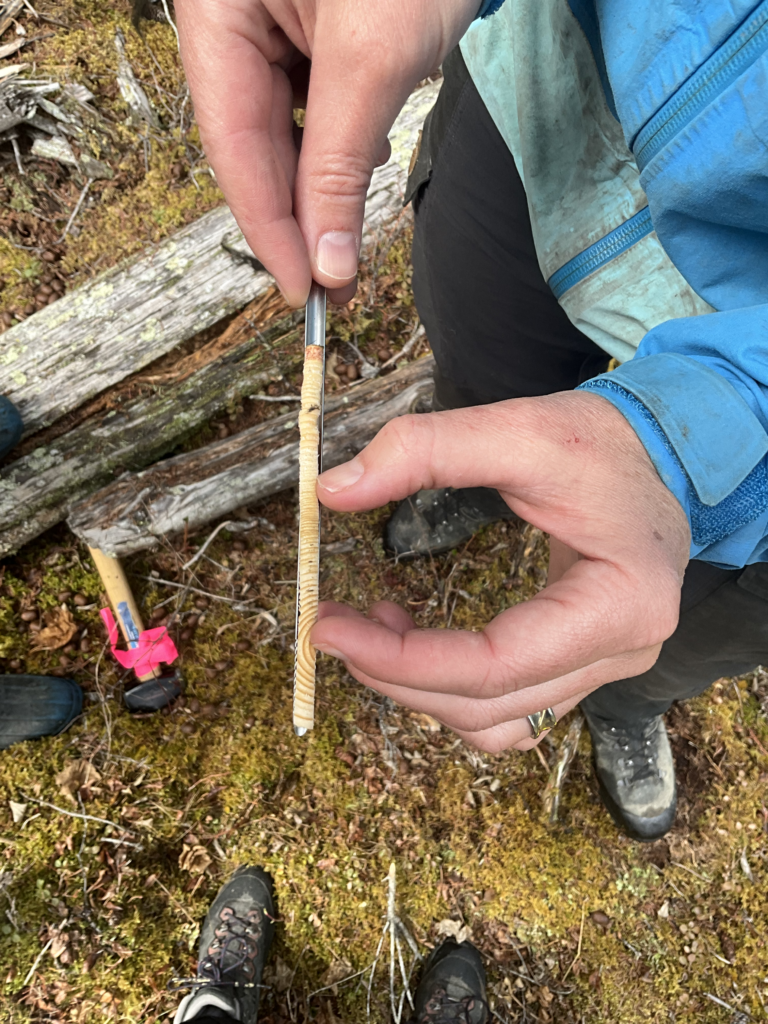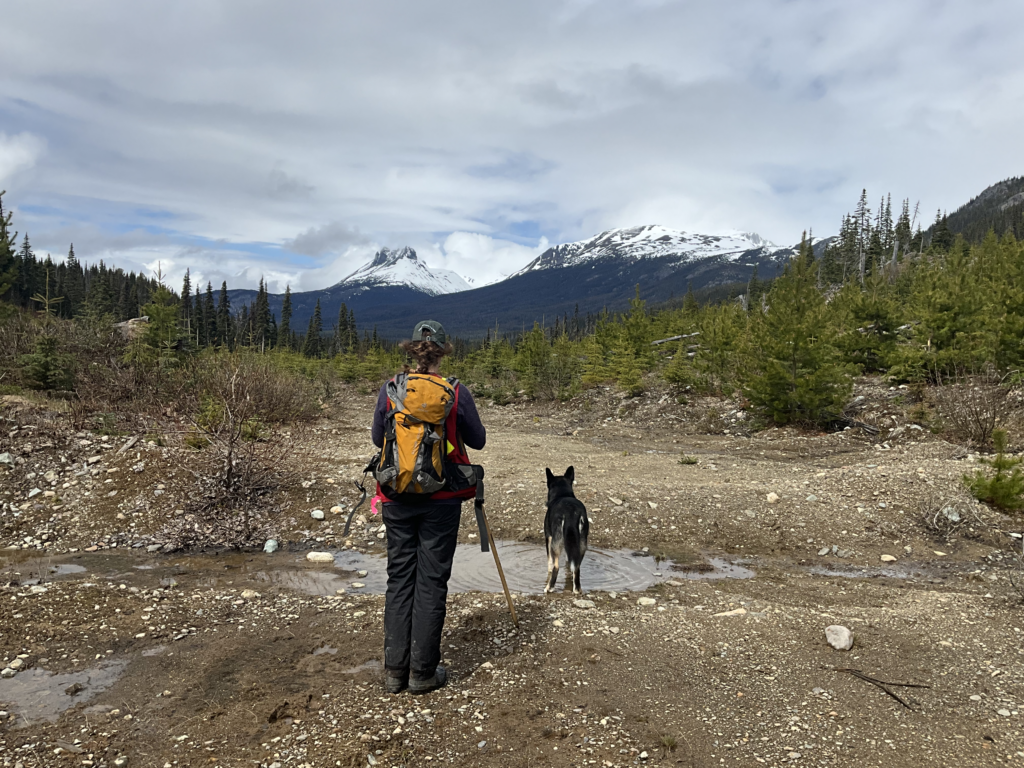Research Spotlight
A Return to the Past

SIP Research Spotlight Series:
New research revisits retention harvests
While innovative silviculture is an exciting opportunity to be creative, it can often feel quite daunting to know which decision is the best for the forest and its future state. What treatment options will improve wildlife habitat? Or, wildfire fuels, or even berry production? This is the challenge that was made clear to researcher, Dr. Alana Clason, with the Bulkley Valley Research Centre and research lead with the Silviculture Innovation Program (SIP), who is searching for answers to this question by looking into the past.
“I am inspired by the diversity of voices in the forestry community that have told me about how we’ve tried many things before,” reflects Clason. “We have a real opportunity to learn from the past to support practitioners of the present and future.”
She recognizes that innovative silviculture has not always been enacted at a large scale, but there is still plenty of work that has been done before that can be revisited to understand how past decisions have changed the forest.

Alana Clason is the lead researcher for a new SIP project assessing how different retention cuts impact wildlife, fuels, carbon and cultural plants in sub-boreal ecosystems over time after harvest. (Photo by Alana Clason)
Learning from retention treatments
Clason is leading the research project, which is evaluating how different retention cuts impact wildlife, fuels, carbon and cultural plants in sub-boreal ecosystems at various time periods after harvest. She is hoping to disentangle impacts to multiple forest and cultural values by returning to sites where a spectrum of different “retention” treatments have been previously implemented and re-assessing how those values are doing. Some of these treatments occurred nearly 40 years ago, which provides a perfect opportunity to see how the treatment affected the stand over time.
Forest harvesting with retention is a common practice in BC. The meaning of “retention” can vary: in clearcut systems, retention might be patches or single trees dispersed throughout the block. But for partial harvest systems, trees are harvested in gaps, strips or by single trees and leave the rest as retention. In both cases, the harvest method leaves a mosaic of remaining trees that will vary in amount, spatial pattern, composition, density, and range of tree sizes. Retained trees or tree patches will contribute to wildlife habitat features, wildlife movement, and fuel loading based on the horizontal and vertical structures left behind. Depending on the approach to retention, the forest response will vary and different benefits to multiple values may occur over time – but these are currently poorly understood.

Example of a previous retention cut with regrowth in the foreground and previously retained trees in the background. (Photo by Jodi Axelson)
Silviculture practices, while typically focused on increasing future timber supply, can also be used to manage a range of non-timber forest values. Multiple forest values are important to Indigenous communities, local communities, forest managers and the public and can range from wildlife habitat and use, wildfire protection, carbon storage, hydrology and more. They can be ecological, social, economic and cultural values. This research project aims to provide an understanding of what practices might support various kinds of desired non-timber forest values.
There is increasing motivation from the forestry sector to better manage for multiple values– from weakening social license to do otherwise, a decreasing timber base, climate change impacts and growing recognition and support for Indigenous rights and responsibilities in resource management. The future of forestry very likely depends on better and stronger management of multiple values.

A research technician examines a tree core sample. (Photo by Carla Lange)
Uplifting multiple knowledge systems
One important aspect of the project is the uplifting and weaving of Indigenous Knowledge into the project, right from the start. The research team is using both Western and Indigenous science to design the monitoring protocols, including the values being measured at each site such as wildlife use and habitat, cultural plants, wildfire fuels, and biophysical forest attributes. This holistic approach to forest values is important to support the transition from timber-focused silviculture objectives to objectives based on multiple socio-ecological and economic values.
The research team is working with the Office of the Wet’suwet’en on the project, including sharing in-field techniques with Guardians. The project design means knowledge creation and knowledge sharing between the research team and Office of the Wet’suwet’en is ongoing and reciprocal. This is critical as the Wet’suwet’en people have stewarded forest resources within their territories since time immemorial using a range of forest management techniques. The collaboration extends throughout the lifespan of this project, which means project learnings can purposefully meet the needs of Wet’suwet’en decision-makers. For example, the team is hopeful there will be knowledge gained on whether silviculture practices can enhance or sustain Wet’suwet’en forest values over time across their territory.

The research project uses motion-triggered remote cameras, such as this one pictured, to monitor wildlife use in stands with retention treatments. (Photo by Gillian Chow-Fraser)
crucial understanding of changes over time
Forests are dynamic ecosystems that constantly change through time – meaning the impacts of different forest management decisions ebb and flow just the same, from forest structure and complexity to wildlife use and disturbance risk. This propensity for complexity challenges the need to track impacts of forest management decisions, especially when different practices may yield different benefits and risks over time and at different times. But Clason is eager to unravel as many mysteries as she can by monitoring and measuring the forest over the long-term after treatment.
“While there is no treatment that will sustain one value over time indefinitely, there is power in understanding what kinds of retention harvests will yield important values and when they will thrive,” says Clason. “It is a testament to the patience and care of foresters that the choices they make today will impact future generations in the decades to come.”

Our field team is treated to spectacular views for their efforts! (Photo by Carla Lange)
